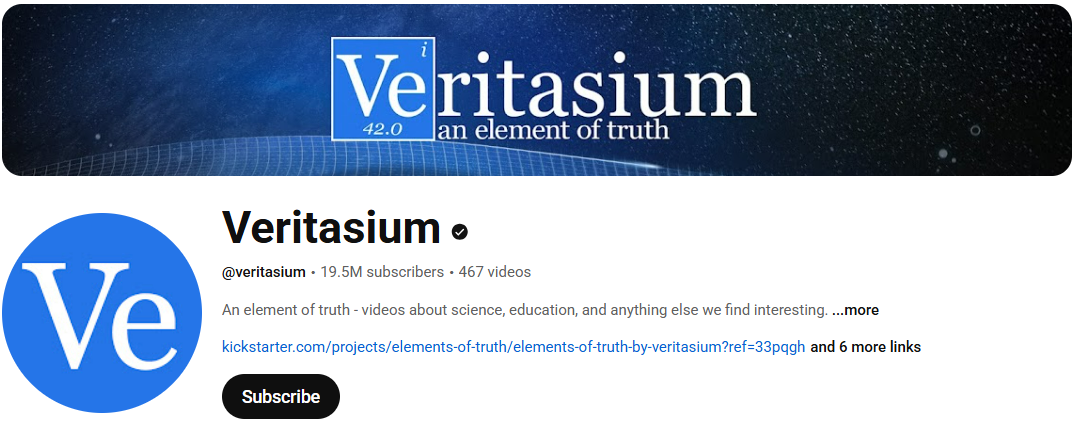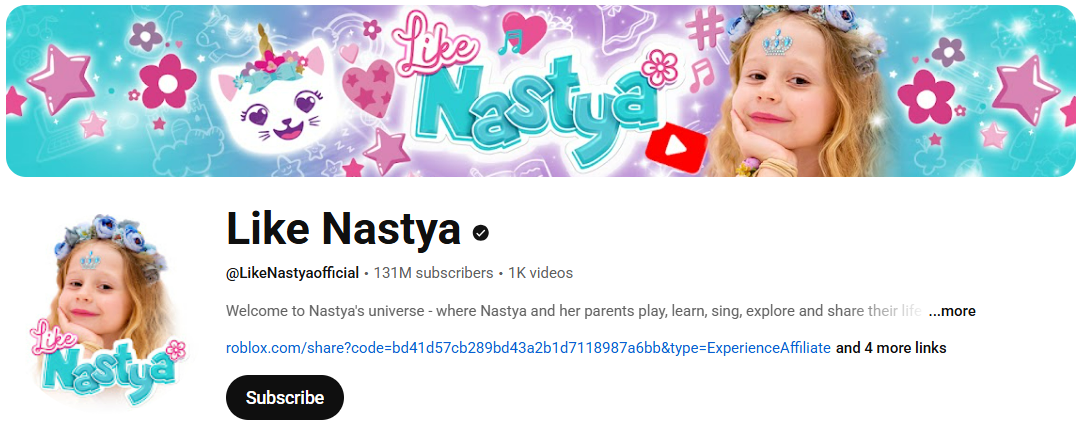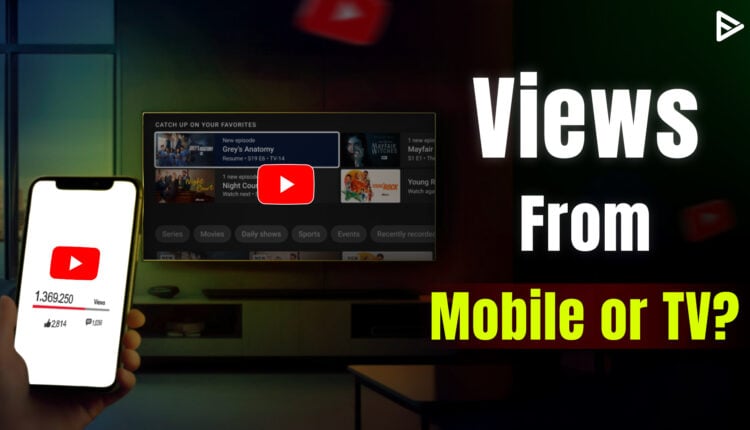The right content towards the right audience is how a YouTube channel grows. But I also like to add user devices to this synergy. Ask yourself! When was the last time you watched YouTube Shorts on TV?
The device type plays a huge role in your content planning. If your channel heavily uploads Shorts but your audience is YouTube TV watchers, then you are aiming in the wrong direction. Or you add quick updates, skits, educational or awareness content, Shorts is a go-to content format. In this blog, we’ll discuss the ideal Mobile vs TV content strategy for your channel. So that you can deploy content based on your viewers’ preferences.
Watch Preference for Mobile vs TV Content Strategy
YouTube has billions of users, and each user has their own watching preferences. For example, in the US itself, people watched 1 billion hours of content on TV, the age group between 13 and 17 preferred tablets (bigger screens), and the majority of users still use mobile devices to use YouTube.
In the recent update, YouTube increased the file size of thumbnails to 50MB because viewers are watching content in higher resolution. This directly impacts the content strategy as thumbnails have to be designed for higher resolution devices such as TV screens.
Another example of how content strategy has evolved in recent times is adding captions or subtitles to videos. The majority of users consume Shorts during commute(bus & subways), waiting in line or public places, and that too in mute. That’s why creators started adding subtitles and CC to their videos.
Similarly, the device type also shapes the content strategy. Shorts fit very naturally in vertical devices, and long-format high-quality videos are best suited for relaxed spaces where TV screens are mounted.
Additionally, when you know your audience, the video is optimized specifically for them, and it gets easy for the algorithm to understand the metadata. The video gets recommended to relevant users and brings unique visitors.
Channel Examples for Mobile vs TV Content Strategy
Let’s see some creators and understand how they acquire an audience by understanding their watch preferences, device type, and audience watch habits.
Best content strategy for the TV audience
Below are some examples of YouTube channels that are perfect for TV audiences. We can do a competitor analysis and find what they are doing to cater to their audience.
Kurzgesagt- In a Nutshell

The channel has 24.8M subscribers as of now and uploads videos in an animated style format. The video length is approximately 8 to 15 minutes. The videos are cinematic, use high-quality animations, engaging warm voiceover tone, and cover educational topics. Which is perfect for TV watchers. Although they upload Shorts too, they are mostly famous on the internet because of their regular videos.
National Geographic

People started watching NatGeo on YouTube at their own pace and based on their interests, unlike fixed episodes on TV. The device type(TV) remained the same for watch preference; it just gave YouTube more control over viewers.
Their documentary style, slow-paced, long, detailed video, remained the same. Which itself is a content strategy that is perfect for Television cum YouTube.
Veritasium

The channel uploads long videos around 25-50 minutes. The channel covers topics such as science, engineering, maths, experiments, and how the world works. Since the videos are long and in detail, they require attention.
The videos involve narrative, deep storytelling, and hooking visuals. Which makes it perfect for bigger screens and binge-watching.
Best content strategy for mobile audience
As we have seen, mobile devices provide quick access to consume Shorts and quick videos. So here are three channel types that are perfect.
Ali Abdal

The channel topics involve productivity tips, lifestyle, education, etc. The content type works on mobile because it’s direct and gives quick overviews of what the video will deliver.
The video format is advice and takeaways, which is best for mobile to quickly switch to other apps to take notes or search for things. The video length is around 8-15 minutes, so viewers can look for chapters and increase the video speed to gain insights without sticking to the whole video.
Like Nastya

The channel is the 8th most subscribed YouTube channel. The target audience is kids aged between 2 and 8 years. The content type is colourful visuals, storytelling, and an educational theme, such as counting numbers or identifying colours.
The videos are translated in multiple languages, with catchy songs, rhymes, large characters a perfect blend to hook children of all regions. The mobile device is handy for such content and keeps children steady when watching videos.
Apple

Although the videos that are uploaded on Apple’s channel are of very high quality, like commercials. Still, the best-suited audience is mobile watchers. Viewers binge-watch YouTube content and accept 2-3 minute ads in between. They will not see a commercial on TV even if it’s high quality, involves storytelling, and creativity.
The reason to add the Apple channel to the list is that there are many YouTube creators who have turned fame into a brand and then into a business. They need to identify where their audience is. The channel is a perfect example of why you need to identify the device type.
How can I see the device type of my viewers?
To see the device type of your viewers:
1. Go to YouTube Studio
2. Select Analytics
3. Choose the Audience tab
4. Look for Device Type Card
The card will break down viewership into Mobile, Desktop, TV, Tablet, and more. Or you can go to settings and choose advanced settings. Select the device type in the breakdown, and you will see something like the image below.
Conclusion
The YouTube landscape is evolving, and creators need to form their content strategy backed by data. In the blog, we discussed the viewers device type, which is one of the important metrics. We discussed some YouTube channels that help you differentiate Mobile vs TV Content Strategy. You can use device type cards to find the percentage of mobile and TV users. All these insights are crucial when promoting your videos to the right audience. So next time, when you create content, the device can help you understand behaviour and boost visibility.
Frequently Asked Questions
Q1. What are mobile content marketing strategies?
The YouTube strategies involve using mobile-friendly content, a homepage layout for mobile users, metadata optimized to reach mobile device types, using SEO, etc.
Q2. Why are YouTube ads longer on TV than mobile?
The device type influenced the ad strategy, becuase TV watchers are tolerant to watch longer ads wheras for mobile devices skipable and bumper ads suits. For an effective YouTube content strategy, utilize analytics to analyze detailed data.
Q3. Do more people watch YouTube on Mobile vs TV?
According to YouTube, there has been a recent rise in YouTube TV viewers, although mobile users still dominate. However, for longer-form videos, there is a notable spike in TV viewership.
Q4. Why are YouTube Ads shifting from mobile to TV ?
There is a significant rise in YouTube TV watchers, and brands are focusing on it because the return on ad cost is primarily seen with TV viewers. Compared to mobile vs TV content strategy, mobile is best for awareness ads & TV for commercials.
Summary
- The type of device used by the audience significantly influences content planning and strategy for YouTube channels.
- YouTube Shorts are best suited for mobile users, while long-format videos are more appropriate for TV viewers.
- Creators should optimize video content and thumbnails for higher resolution devices, as more viewers are consuming content on TVs.


